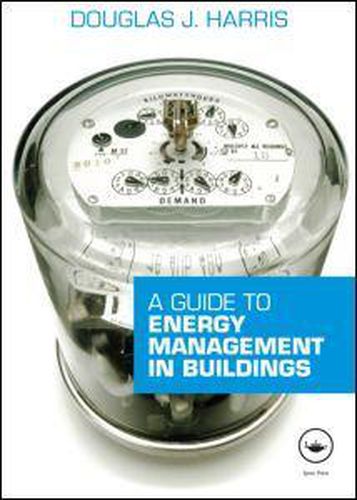Readings Newsletter
Become a Readings Member to make your shopping experience even easier.
Sign in or sign up for free!
You’re not far away from qualifying for FREE standard shipping within Australia
You’ve qualified for FREE standard shipping within Australia
The cart is loading…






Inefficient energy use in buildings is both increasingly expensive and unsustainable. Indeed, the reduction of the energy consumption of existing buildings is as least as important as the design of new low-energy buildings. Controlling energy use is one thing, but it is important to assess or estimate it, and to understand the range of interventions for reducing its use and the methods for assessing the cost effectiveness of these measures. This comprehensive guide clearly and concisely covers the various issues from a theoretical standpoint and provides practical, worked examples where appropriate, along with examples of how the calculations are carried out. Topics covered include: where and how energy is used in buildings energy audits measuring and monitoring energy use techniques for reducing energy use in buildings legislative issues. It provides a template for instigating the energy management process within an organization, as well as guidance on management issues such as employee motivation, and gives practical details on how to carry it through. This book should appeal to building managers and facilities managers and also to students of energy management modules in FE and HE courses.
$9.00 standard shipping within Australia
FREE standard shipping within Australia for orders over $100.00
Express & International shipping calculated at checkout
Stock availability can be subject to change without notice. We recommend calling the shop or contacting our online team to check availability of low stock items. Please see our Shopping Online page for more details.
Inefficient energy use in buildings is both increasingly expensive and unsustainable. Indeed, the reduction of the energy consumption of existing buildings is as least as important as the design of new low-energy buildings. Controlling energy use is one thing, but it is important to assess or estimate it, and to understand the range of interventions for reducing its use and the methods for assessing the cost effectiveness of these measures. This comprehensive guide clearly and concisely covers the various issues from a theoretical standpoint and provides practical, worked examples where appropriate, along with examples of how the calculations are carried out. Topics covered include: where and how energy is used in buildings energy audits measuring and monitoring energy use techniques for reducing energy use in buildings legislative issues. It provides a template for instigating the energy management process within an organization, as well as guidance on management issues such as employee motivation, and gives practical details on how to carry it through. This book should appeal to building managers and facilities managers and also to students of energy management modules in FE and HE courses.